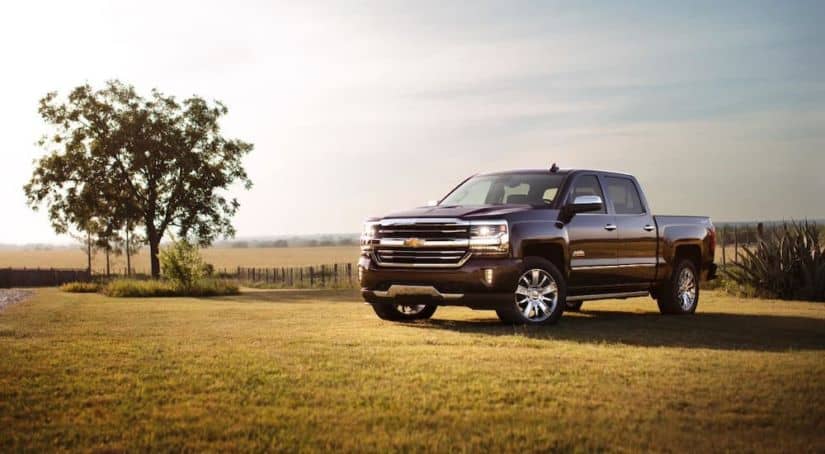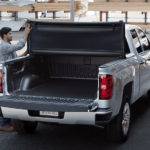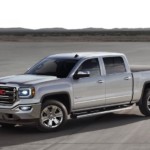Once upon a time, someone somewhere started the rumor that you should only buy pickup trucks brand new. At the time, it probably made sense. After all, a statement like this has all the markings of being Almanac-style advice, probably issued from a Midwesterner whose ancient jalopy had given up more times than not, usually in the commission of work-related activity. Given what a hassle having a truck repaired in rural areas might have been in the early days of pickups, there’s probably a lot of wisdom behind that statement. But today’s used car dealerships are a far different scene than they were even 20 years ago.
Rather than hosting an assortment of vehicles that have one tire in the junkyard, today’s used vehicles are simply experiencing a mid-life career change. 100,000-miles is no longer an end-of-life curse, but a sign that the vehicle was blessed with good engineering and a high-reliability factor. And it’s not just cars- the zippy sedans that seem to live forever- it’s trucks, too. In fact, the Chevy Silverado 1500 is one such example of exactly the right type to buy used. Let’s check out a few examples of how the Silverado is designed to age gracefully by comparing the previous two all-new redesigns: the first in 2014, and the second in 2019.
The Tale of Two Trucks
When it comes to keeping the Silverado 1500 fresh and new for drivers, it seems like Chevrolet is a step ahead of the truck community. At the mere hint of the phrase “dated” in a review, something monumental is refreshed within the next model year. That could be any sort of change, ranging from an automatic transmission (2009), standard safety equipment (2007), or noise control (2011).
The trucks chosen for this particular portrait are the 2014 and 2019 models. Both years were major overhaul model years for the Chevy Silverado 1500, with a top-to-tailpipe makeover. This is an attempt to compare apples to apples- how does a five-year-old used vehicle stand up to a next-to-new revamped favorite?
Bear in mind that the Chevrolet Silverado has recently won several awards for dependability and long-term use from the esteemed car review site, Kelley Blue Book. This includes making the Top Ten for the 2020 KBB.com Best Resale Value, the 2020 KBB.com 5-Year Cost to Own Full-Size Pickup Truck, and the 2017 KBB.com Best Resale Value: Full-Size Pickup Truck. The intention of all of these awards is to rate the vehicle’s long-term value. The “5-Year Cost to Own” award ranks vehicles based on how well they maintain value after the five years off the lot. We all know that any car depreciates the minute it leaves the lot, so retaining value over the five years in which drivers might be making payments on the vehicle is important for gauging whether this is a sound investment or not. According to KBB, the answer is a resounding yes.
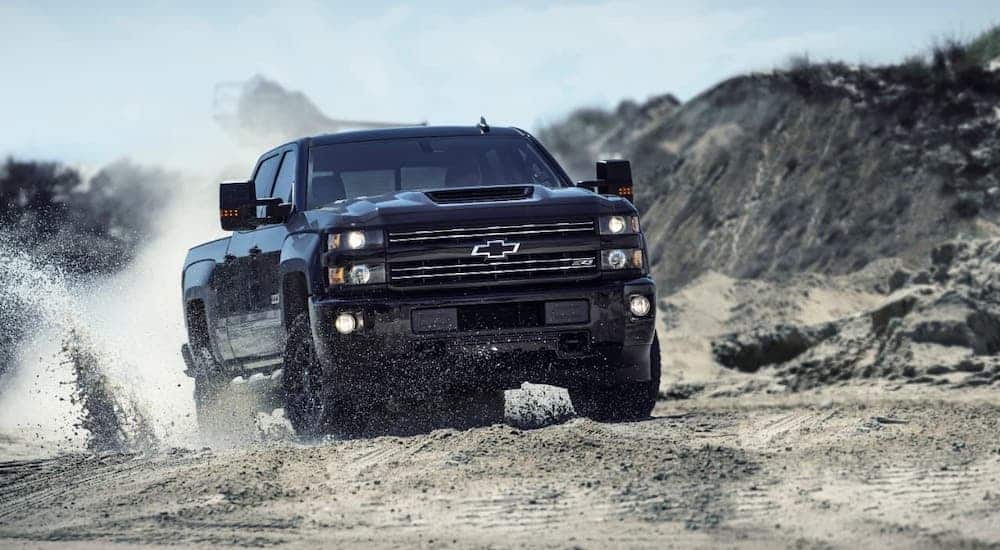
Apples to Apples
One area in which Chevy tends to baffle the vehicle experts- yet thrill the pickup truck community- is in the wide array of options it has granted drivers of the Silverado 1500.
In 2014, drivers were given multiple choices before they could bring home their new truck. First, the selection of two-wheel or four-wheel drive, then the cab style (regular cab, extended cab, or crew cab), and a choice of bed size, which depended on the cab size. Regular cabs may have an 8 foot or 6.5-foot bed, extended cabs could have a 6.5-foot bed, and crew cabs got a 5.75 foot or 6.5-foot bed.
On top of that, the trim needs to match the body type. The regular cab options include the Work Truck, with it’s 1WT and 2WT sub-trims, as well as the LT trim. The LT trim also could be optioned as an extended or crew cab, while the LTZ, High Country, and Z71 trims were only offered as extended or crew cabs.
Surely Chevy must have made up their mind and narrowed these selections down for the 2019 reissue, right? False. Chevrolet does not tell its customers what they want to drive; it gives its customers the opportunity to drive what they want.
The 2019 Chevy Silverado 1500 is offered in eight trims: Work Truck, Custom, Custom Trail Boss, LT, RST, LT Trail Boss, LTZ, and High Country. Crew Cab, Double Cab, and Regular Cab variations are offered, with a slight limitation to cab/bed options: Crew cab options have a short or standard bed, Double Cabs have standard beds, and Regular Cabs have a long bed. And the choice of two or four-wheel drive remains.
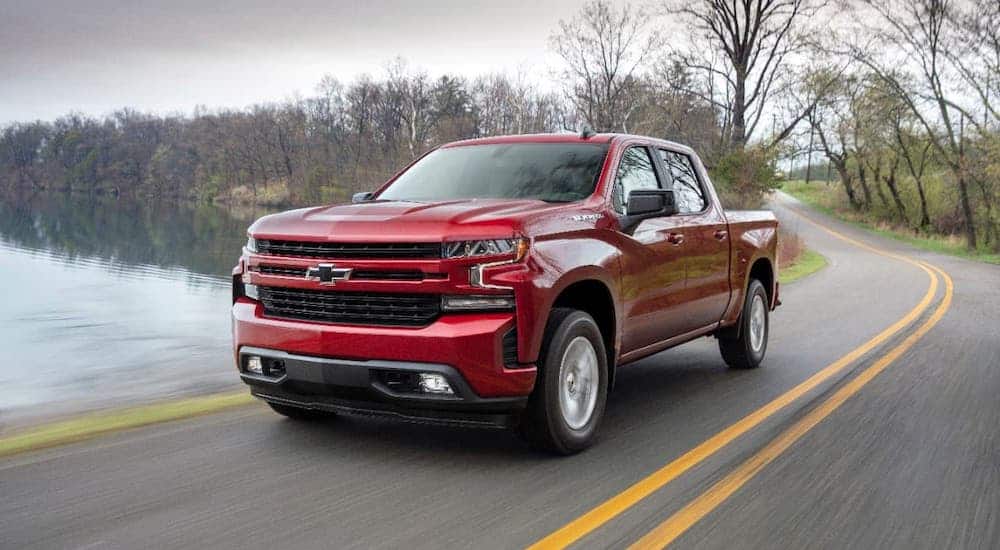
Translated Into Power
For the most part, serious drivers are most interested in putting money into a truck that is going to run, run well, and run for a very long time. The only way to tell that is to peek under the hood.
The 2014 Chevrolet Silverado offers only three engine options. Each engine was a brand new development from Chevy in 2014, with never-seen-before features, such as Flex-Fuel compatibility, Ecotech3 direct fuel injection technology, cylinder deactivation, which activates only as much of the engine as needed for the load. Two-wheel drive models had the 4.3L V6 engine assigned automatically, with its 285 horsepower and 305 lb/ft of torque. A 6.2L V8 with 420 horsepower and 460 lb-ft of torque was for four-wheel drive models only, and in the middle is an optional and capable 5.3L V8 with 355 horsepower and 383 lb-ft of torque.
These engines are still available on the 2019 Silverado 1500, though Chevy has spent the past five years improving with the overall technology. This includes two different cylinder management systems, including Active Fuel Management, which shuts off cylinders that aren’t needed, as well as the new-for-2019 Dynamic Fuel Management system, which allows the engine to utilize 17 different cylinder patterns to accommodate demand and fuel efficiency.
This, of course, leads to more options and choices. The 4.3L V6 with a 6-speed automatic transmission is now available on two and four-wheel-drive models. The 5.3L V8 is offered with Dynamic Fuel Management and an 8-speed automatic transmission on the LT, RST, LT Trail Boss, LTZ, and High Country, or with Active Fuel Management and a 6-speed automatic transmission on the WT, Custom, and Custom Trail Boss models. The 6.2L V8 is around, with Dynamic Fuel Management, a 10-speed automatic transmission as an option on the LTZ and High Country models only. If none of those meet your fancy, there is a 2.7L turbocharged inline-4 with an 8-speed automatic that offers 310 horsepower and 348 lb-ft of torque.
Overall, has much really changed when it comes to the Chevy Silverado 1500? There are plenty of similarities in the choices of body styles, engines, and trims, but those similarities seem to end in title only. In the past five years, the engine options have been improved upon to provide greater fuel economy while retaining the power to drag massive payloads and trailers. The 2014 Silverados with the 4.3L V6 can tow up to 7,600 pounds, while models featuring the 5.3L engine and the Max Towing optional package crank that maximum up to 12,000 pounds. In the case of the 2019 Silverado 1500, the 6.2L engine and Max Towing package provides 12,200 pounds of trailering power, but the 4.3L engine can still manage 7,600-7,900 pounds, depending on the cab/box configuration.
The details of each trim package have certainly changed over the years, as features like the Corner Step are added. Infotainment screens have become larger, with more standard driver assistance safety technology appearing year after year.
When it comes to a reliable, dependable, and durable truck that’s going to start the same way and handle the same job five years down the line, the Chevy Silverado 1500 has proven it can stand the test of time.
